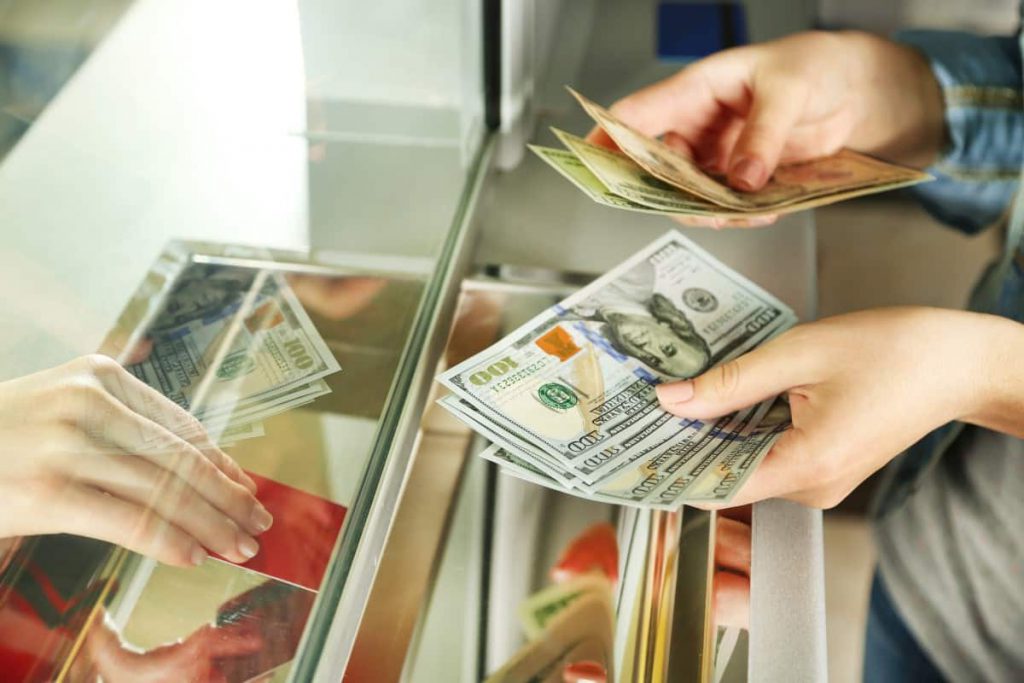
U.S. dollar firmed Tuesday. What about other currencies?
The greenback strengthened today ahead of the U.S. midterm elections. While a conclusive result to the midterms won’t be known immediately, the latest surveys forecast Republican victory, in the House of Representatives at least.
The dollar index traded at 110.4 against the basket of six major currencies, declining from its recent high of 113.5 reached in the middle of last week. On Monday, the news about China contemplating relaxing its Covid-19 restrictions rallied the markets and heavily weighed on the U.S. currency. However, the investor sentiment has cooled somewhat since then, giving the greenback more leeway to gain.
Still, analysts question whether the currency will retain its strength in the coming days. Kenneth Broux, the senior FX strategist at Societe Generale, noted that the U.S. dollar has failed to return to the peaks despite the repricing of the terminal rate (FOMC report). Thus, markets might be reaching a point of exhaustion in the greenback’s move higher.
Some economists think that the elections’ outcome could be negative for the USD, but positive for bonds, especially if it results in less fiscal stimulus. Damien Boey, the chief macro strategist at Barrenjoey in Sydney, noted that if people get a Republican sweep or gridlock outcome, it will be more difficult to get fiscal stimulus through 2023. In that case, Federal Reserve chair Jerome Powell will be able to afford to slow the aggressive interest rate hiking.
The rapid pace of U.S. rate increases has bolstered U.S. Treasury yields, causing them to skyrocket. Moreover, such a policy supported the dollar, pushing the currency to multi-year highs against most major peers. However, analysts speculate that this trend might end in the coming months.
How are the Euro and the British Pound faring?
The common currency exchanged hands at $1.0031 on Tuesday. It surged forward to its highest level in almost two weeks. However, the Euro decreased slightly soon afterward, trading at the $1 level at last. The Sterling also tumbled by 0.43% to $1.14655 during this session. Still, the pound traded higher compared to its recent lows.
Moreover, the Australian dollar and other risk-on currencies ended in the red, with the Swedish crown also plummeting. But the safe-haven Japanese yen hit a one-week high of 146.15 per USD today.
The Fed’s rate-setting committee hiked rates by 75 basis points last week. Chair Jerome Powell hinted that the agency would continue raising them. That news prompted forex markets to reprice expectations of the point at which they would hit the highest level.
Meanwhile, the Yuan exchanged hands at 7.2612 per dollar on Tuesday. The currency skyrocketed to its two-year high on Friday and has managed to hold on to most of those gains. However, it declined slightly today as new coronavirus outbreaks dimmed the market optimism.
China issued a strict virus policy to hinder the spread of Covid-19. It includes lockdowns, rigorous testing, and quarantining. Recent speculation about the country lifting those restrictions bolstered the Yuan and sent the U.S. dollar in the red. However, some Chinese officials announced over the weekend that the measures were correct and would stay.
What about the EM currencies?
Indonesia’s rupiah rallied for a second consecutive session today. Southeast Asia’s largest economy reported Q3 growth data on Monday. After that news, its currency surged forward by 0.3%. Despite the recent gains, the rupiah is still lower by almost 10% versus the U.S. dollar for a year.
On Tuesday, Jakarta’s main stock index shaved off 0.4% after three days of straight gains. Some experts think that strong growth might encourage Bank Indonesia to hike its rates aggressively like other central banks. They are trying to fight rising inflation by increasing rates.
Furthermore, most other Asian currencies rallied on Tuesday. Thailand’s baht climbed up for a third straight session. The Philippine peso also jumped today as positive data from the countries bolstered investors’ expectations of further interest rate increases. Consequently, the Philippine peso surged by as much as 0.6%. According to a new report, the country’s unemployment rate lowered for a third consecutive month in September. Traders hope that the economy will be able to withstand sharp increases in rates.
Nicholas Mapa, a senior economist at Dutch bank ING, noted that the Philippines central bank would likely repeat any hike by the U.S. Federal Reserve in the coming months.


